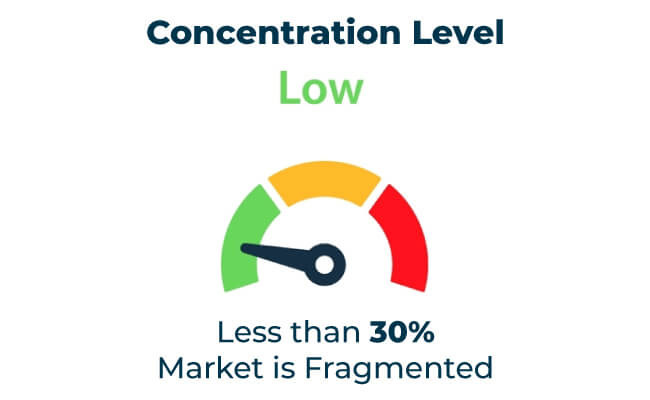The Ascorbic Acid Market was valued at around USD 1,606.2 million in 2025 and is anticipated to surpass USD 2,796.1 million by 2035, exhibiting a CAGR of 5.7% during the forecast period. The primary factor for the expansion of the market is the increase in the intake of Vitamin C supplements and the broad use of it in the food industry as a preservative, in cosmetics, and personal care articles.
| Attribute | Details |
|---|---|
| Estimated Market Value (2025) | USD 1,606.2 million |
| Projected Market Value (2035) | USD 2,796.1 million |
| CAGR (2025 to 2035) | 5.7% |
Ascorbic acid is known for its antioxidant properties, and it mostly exists in the food & beverage industry since it is used to prolong the shelf life and to add nutritional value to products. What is more, the mention of the application of ascorbic acid in skin health and its use for boosting immunity is redirecting the interest of this ingredient from the cosmetic sector to the pharmaceutical also.
The more information is being disseminated about the necessity need for Vitamin C to support health particularly after pandemics is the additional reason for the market to grow.
A significant growth in the demand for ascorbic acid is driving the growth to the global Ascorbic Acid Market. The rapid adoption of its application in a range of products such as food, drinks, drugs, and cosmetics significantly contributes to this phenomenon. Ascorbic acid is an important factor in many activities including strengthening the body's immune system, food loss prevention, and skin enhancing.
DSM, CSPC Pharmaceutical Group, and Northeast Pharmaceutical Group (NEPG) are the top players in the market, covering nearly 10-15% of the market together. The companies leverage strong production capabilities, research and development (R&D) programs, and well-established distribution networks to their advantage.
The ongoing acknowledgment by the consumers and industries of the application's multitude of ascorbic acid, the market will be further propelled by product innovation and increased demands for fortified and functional foods.
Rising Demand for Functional Foods and Supplements
With the increase in consumer awareness related to health and wellness, there is a consistent rise in the demand for food and supplements fortified with Vitamin C (ascorbic acid). This is predominantly observed in the aging population and those looking at products that aid in their immunity.
Increasing Use of Ascorbic Acid in Cosmetics and Personal Care
Ascorbic acid is usually included in antioxidant-rich skincare products that are the major component of such anti-aging and skin brightening formulations. The consumer trend for vitamin-filled and anti-aging products is pushing more and more use of ascorbic acid in the personal care sector.
Growth of the Pharmaceutical Industry
With the passage of time, the requirement for ascorbic acid in the pharmaceutical industry is acutely felt in the manufacture of Vitamin C tablets, syrups, and injectables. The increased knowledge of immune system health and the supportive action of vitamin C are important elements that foster progress.
| Global Market Share 2025 | Industry Share (%) |
|---|---|
| Top 3 (DSM, CSPC Pharmaceutical Group, Northeast Pharmaceutical Group) | 10% |
| Rest of Top 5 (North China Pharmaceutical Group, Shandong Luwei Pharmaceutical) | 5% |
| Emerging & Regional Brands (Aland Nutraceuticals Group, Anhui Tiger Biotech, Bactolac Pharmaceuticals) | 20% |

| Tier | Tier 1 |
|---|---|
| Market Share (%) | 35% |
| Key Companies | DSM, CSPC Pharmaceutical Group, Northeast Pharmaceutical Group |
| Tier | Tier 2 |
|---|---|
| Market Share (%) | 40% |
| Key Companies | North China Pharmaceutical Group, Shandong Luwei Pharmaceutical |
| Tier | Tier 3 |
|---|---|
| Market Share (%) | 25% |
| Key Companies | Aland Nutraceuticals Group, Anhui Tiger Biotech, Bactolac Pharmaceuticals |
The Ascorbic Acid Market is likely to increase gradually as more consumers gain knowledge of the health benefits from Vitamin C. North America and Europe are going to dominate this market since there is an increased demand for supplements and functional foods.
However, in Asia-Pacific, it will see much growth because of higher disposable incomes and an increased awareness about health supplements. Companies need to innovate more in sustainable production methods and increase their portfolios for the increasing demand for natural, clean-label products.
The largest market share is held by DSM, CSPC Pharmaceutical Group, and Northeast Pharmaceutical Group, collectively accounting for 10-15% of the market.
Emerging and regional brands, such as Aland Nutraceuticals Group and Anhui Tiger Biotech, hold approximately 20% of the Ascorbic Acid market share.
Startups and artisanal brands contribute to around 25% of the market share, reflecting a growing interest in niche and organic products.
Private labels currently control about 15% of the market, as consumers often prefer established brands for quality assurance.
Market concentration is assessed as medium, with top players holding 40-60% of the market share, indicating a competitive landscape.
Key growth drivers include rising demand for functional foods and supplements, increasing use in cosmetics, and growth in the pharmaceutical industry.
Explore Similar Insights

Thank you!
You will receive an email from our Business Development Manager. Please be sure to check your SPAM/JUNK folder too.
Chat With
MaRIA